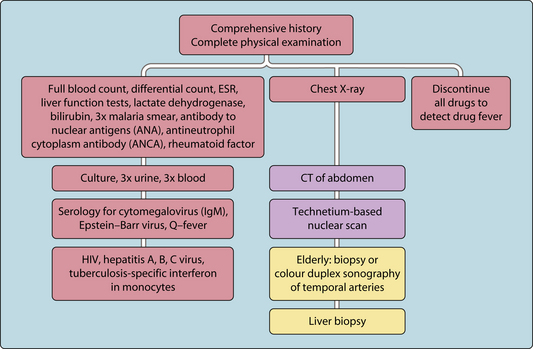35. Pyrexia of unknown origin
Investigations
Investigation may include samples sent for laboratory testing; non-invasive tests such as diagnostic radiology and ultrasound and radionuclide scanning; a tuberculin skin test or the more tuberculosis-specific interferon test on patients’ monocytes; and invasive testing such as biopsy, endoscopy and surgical exploration. A possible minimum set of investigations is listed in Fig. 3.35.1. Further investigation will depend upon what has already been done, and clues that may be obtained from the history and examination, working through all the possible differential diagnoses.
< div class='tao-gold-member'>
Only gold members can continue reading. Log In or Register to continue
Stay updated, free articles. Join our Telegram channel

Full access? Get Clinical Tree
















